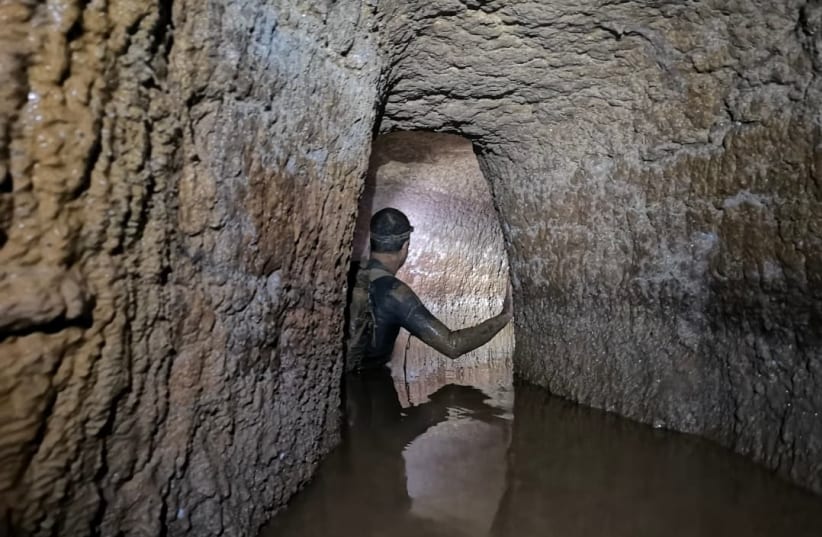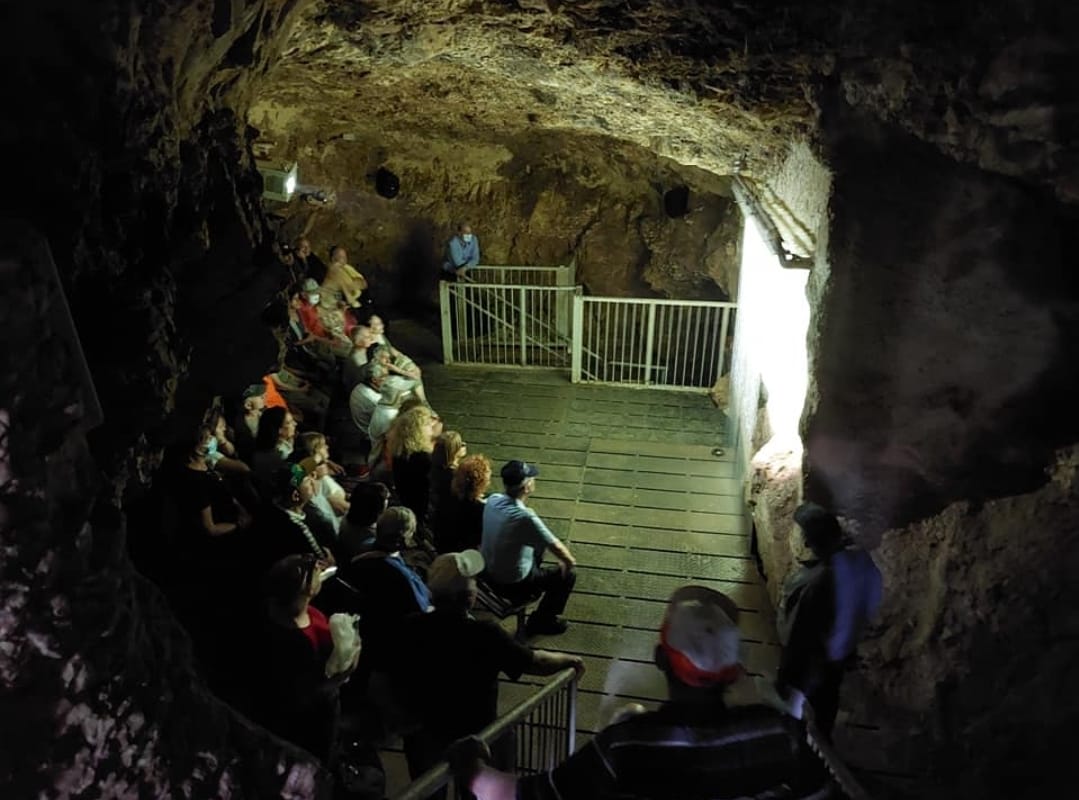When he goes to the tap, not casually but with purpose - his heart opens and he watches in wonder. And here, miraculously, water flows." (Jerusalem which I have chosen", Yehuda Haezrahi)
Since time immemorial, the issue of water has been a challenge in Jerusalem. The city's only major source of water is the Gihon Spring, which originates in the channel of the Kidron Stream to the east of the city.
In the early days of the city, when it was still called Yevus and then when King David chose to make it his capital, the residents of Jerusalem were content with spring water, but as the city grew and expanded, the water shortage grew.
One solution was found in digging pits and pools to collect rainwater. Since the days of the First Temple and throughout history, every drop of water that could be collected was collected in reservoirs and cisterns under the residents' houses. [In the early days of the Mandate, the British conducted a comprehensive survey and found that there were about 7,300 water holes in the Old City alone!]
In the days of the Second Temple, as the city grew, so did the water shortage grow stronger from year to year and put the city's residents and pilgrims in trouble. The danger increased, of course, in years of drought when the springs dwindled, and the water in the pits dwindled and became rancid.
In that period in Rome, there were sophisticated water systems that supplied water to everyone, nymphaeums, fountains, public toilets and baths in the streets of the Roman cities.
In order to build such a water system, two conditions must be met. The first is an abundant water source and the second is having height differences that will allow the abundance of water to flow to Jerusalem through gravity.
The Hasmoneans had already brought the knowledge and technology to Israel and built an aqueduct that led water from a group of springs south of Bethlehem to the Temple Mount, which is located about 11 km north of there (the same aqueduct will later be called "the lower aqueduct"). With the conditions of the terrain, in order to maintain the slope, it was quite a challenge and the aqueduct had to bypass all the hills on the way, twist over about 21 km and flow at an angle of 0.08 degrees, a drop of about 1.4 meters for every kilometer (1.4 permille).
The aqueduct is mentioned several times in our sources - "The aqueduct used to go to it (to the Temple) like an eagle" (Tractate Midot 1:9); another passing mention is found in Tractate Yoma, "In the water of the aqueduct like an eagle, the high priest immersed on Yom Kippur." (Yoma 31)
During the Second Temple period, Jerusalem became one of the largest and most magnificent cities in the world and spread over a large area that was the peak of its size from its foundation until the modern era. Its area then was about 1,800 dunams, almost twice the area of the current Old City. Throughout the developed city stood markets, public and cultural buildings, bathhouses, public purification baths, grand palaces and luxury neighborhoods. The population of the city, which numbered at least 60,000 inhabitants, was mostly concentrated in the upper city (the area of the present-day Jewish Quarter and Jaffa Gate), away from the spring and the Temple Mount where the lower aqueduct reached.
At that time, Herod rebuilt the Temple, about which the Sages said, "He who has not seen Herod's building - has not seen a beautiful building of his time." The word of Jerusalem built by Herod as one of the most beautiful cities in the world traveled far, and the impressive and huge Temple attracted hundreds of thousands of pilgrims.
In addition to satisfying the needs of the many pilgrims, Herod’s palaces and the bathing and mikve facilities, and even the operation of the Temple and its maintenance, required enormous amounts of water, and therefore Herod was required to perfect and develop the initial water project founded by the Hasmoneans.
The system of aqueducts for Jerusalem known to us from archaeological finds is the most elaborate and longest of the aqueducts in Israel. The same amazing and sophisticated water system continued to be used by the residents of Jerusalem for almost two thousand years and was in use until the First World War.
At the center of the system are three Solomon's Pools located south of Bethlehem. The pools served as a water reservoir and a point of regulation and control of the water plant.
From the pools, two aqueducts came to Jerusalem: the lower aqueduct that led water to the Temple Mount and the Temple in its center, and the upper aqueduct that led water to Herod's palace and the upper city of Jerusalem.
Two aqueducts led water from the heart of Mount Hebron to Solomon's Pools. The first, Amat Ha’arov, winds 39 km (instead of 10 km as the crow flies) at a slight incline and leads to the water pools from a group of springs located south of the Gush Etzion junction.
The second is Amat Habiar, which was the main source of water for the upper aqueduct. It is 4.7 km long and begins at the source of Ein Biar (Biar-Bor, “well” in Arabic) in the south of the channel of the Pirim Stream, which is northwest of Efrat.
Amat Habiar is considered one of the oldest and most impressive water wells in Israel, and its engineering solutions include sophisticated regulation facilities that have not been found anywhere else in the world. In addition, the aqueduct is unique in that it not only transports water but also "produces" it.
The builders of the aqueduct realized that Nahal al-Firim (Wadi al-Biar) drains water into it from all around and so they carved the aqueduct at a depth of about 18 meters below the surface in order to catch the same water that seeped into the aquifer, thus creating a situation where the flow of Amat Habiar is seven times greater than the source of Ein Biar itself.
Today, Amat Habiar is open to the public and offers a walk of about 150 meters inside the aqueduct, underground in the cold waters of the aqueduct that supplied water to the residents of Jerusalem and the Temple about two thousand years ago, an experience for the whole family that should not be missed.
On-site, there are a kiosk, lawns, and a sound-light show that tells the story of the aqueduct.
The site is open every day from May 1 to September 30
Sun-Thurs 10 a.m. to 7 p.m.
Fridays from 8 a.m. to 1 p.m.
In July and August, entrance to the greater Biar site is free, while admission to the aqueduct itself costs:
NIS 20 per person
NIS 15 per person in a group of over 30 people
For more information: Kfar Etzion b.s.Sade
This article was written in cooperation with Kfar Etzion b.s.Sade

